
Imagine if your electric vehicle (EV) wasn’t just a mode of transport but also a backup power source for your home or a tool to support the electricity grid. This is the promise of bidirectional EV charging, a technology that enables two-way energy flow between an EV and the grid or home. While still in its early stages, recent regulatory changes and new product developments are pushing bidirectional charging closer to mainstream adoption in Australia in 2025.
▶️MORE: When is V2G Really Coming to Australia?
What is a Bidirectional EV Charger?
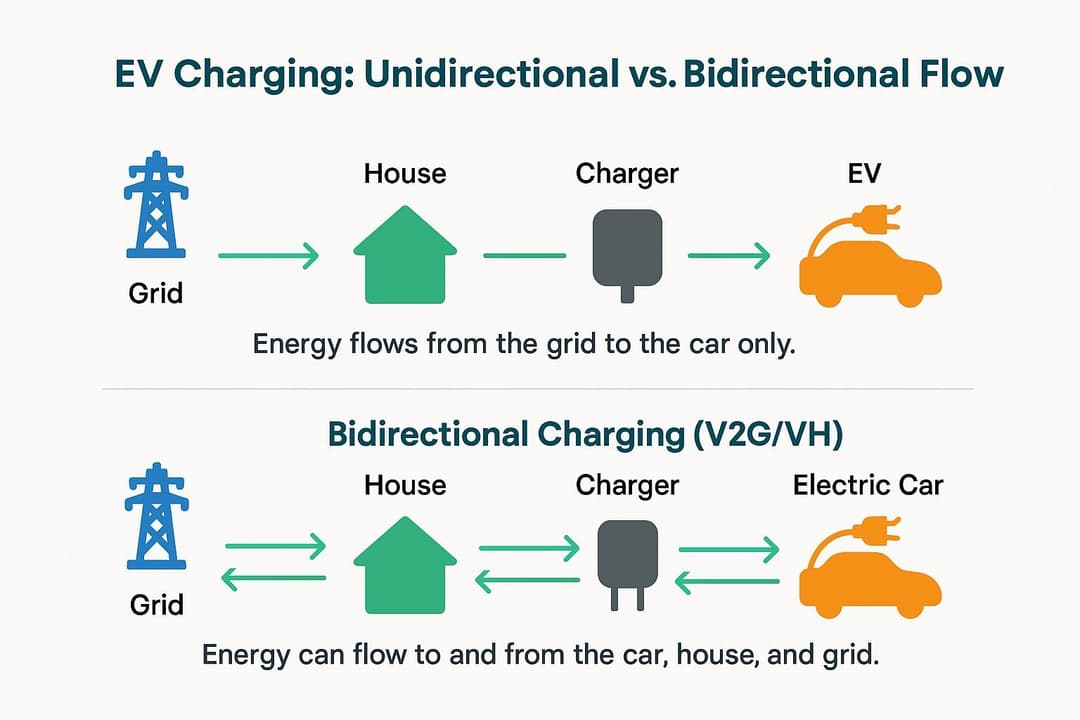
Unlike conventional chargers that only pull power from the grid to charge a vehicle, bidirectional EV chargers allow electricity to flow both ways. This means an EV battery can store energy and return it when needed. Here’s how it works:
- Vehicle-to-Grid (V2G): EVs can return energy to the grid during peak demand, helping stabilise the power system.
- Vehicle-to-Home (V2H): EVs can power a home, reducing energy costs and providing backup during outages.
Bidirectional chargers convert AC (alternating current) from the grid into the high-voltage DC (direct current) needed to charge an EV. When discharging, they reverse the process, sending energy back as usable AC power - similar to how batteries like the Tesla Powerwall work.
▶️MORE: Watt is Bidirectional Charging, V2G, V2H, V2L?
Regulatory Changes and Australia’s Progress
Recent grid code updates (AS4777.1 and AS4777.2) have removed one of the one of the biggest hurdles for bidirectional charging. What remains is the availability of chargers and cars. With the imminent listing of the first bidirectional (V2G) charger on the CEC product list - V2G technology could soon be ready for wide spread adoption.
▶️MORE: Which Electric Cars Have Bidirectional Charging
AC vs DC Bidirectional Chargers
In the world of bidirectional chargers there are two types: alternating current (AC) and direct current (DC). With AC chargers the conversion occurs in the car and energy is discharged to an AC charge point. With DC chargers, the conversion occurs in the charger. Where this conversion occurs determines which part of the system needs to comply with grid code requirements.
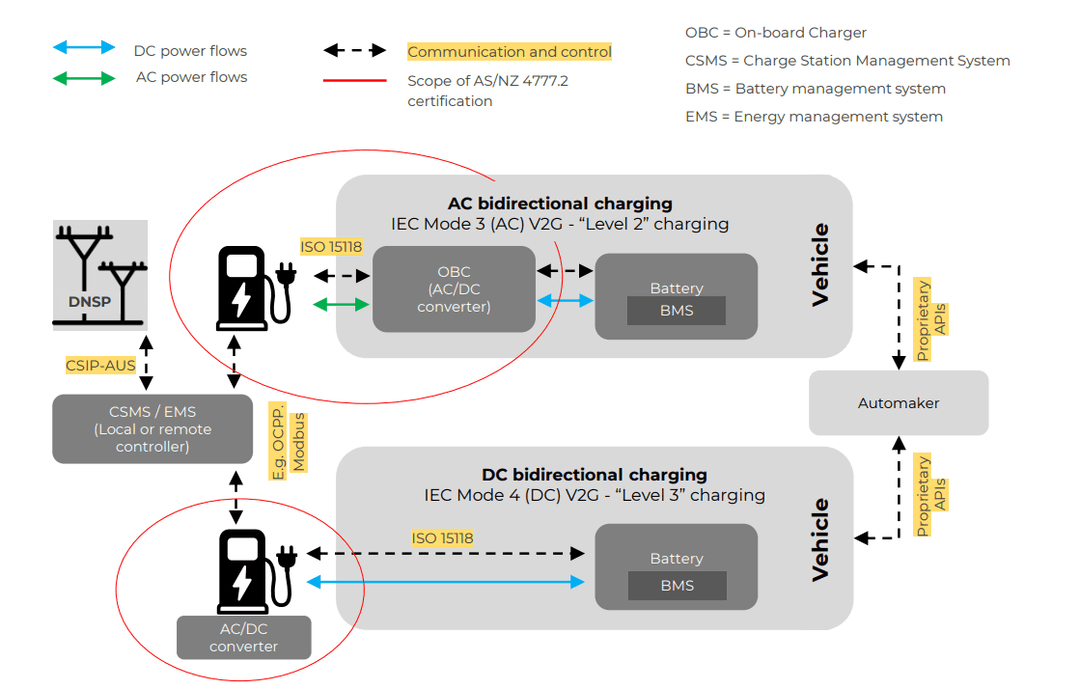
In Australia it looks likely we will move forward with DC bidirectional chargers as the solution that will prevail in the immediate future. Below are the Bidirectional EV chargers coming to Australia.
Sigenergy SigenStor
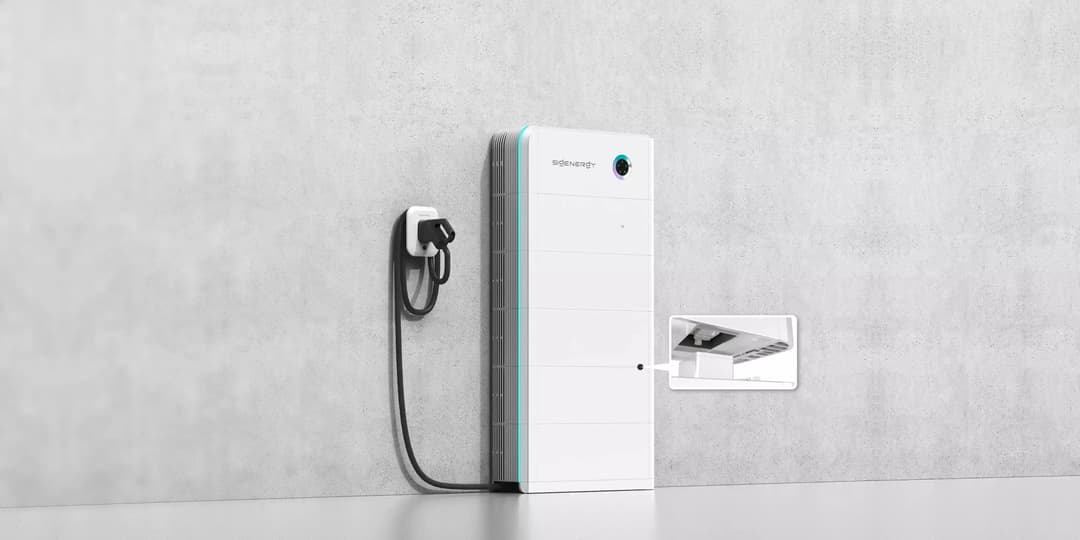
| Power | 12.5 kW / 25 kW |
| Protocools | ISO 15118-2 / ISO 15118-20 |
| ASNZ4777.2 certification | ✅ |
| CEC product listing | ✅ |
| Grid connection status | ✅ |
| Availability | Undergoing trials |
Sigenergy claim to have the first compliant bidirectional charger in Australia. The Sigenergy SigenStor is a hybrid energy storage and charging system that combines solar, battery storage, and bidirectional charging in one unit. Available in 12.5kW and 25kW models,
The Sigen Energy EV DC Bidirectional Charging Station when paired with the Sigen Energy controller/inverter is certified to AS/NZS 4777.2 and is also approved by the Clean Energy Council (CEC).
The Sigenergy system is different to the other bidirectional DC chargers on the list in that the charging system comprises a separate modules comprising: 1. DC EV charger and 2. an external inverter. Since the Sigen inverter is already certified, the system as a whole is certified and compliant.
The price of the SigenStor 12.5 kW charging module is ~$4,850. The Signenery inverter will be an additional cost (between $1,800 to $5,500).
The other bidirectional charging stations on the list have integrated inverters, therefore the whole charging station needs to be certified to AS/NZS 4777.2.
StarCharge Halo V2G Charger
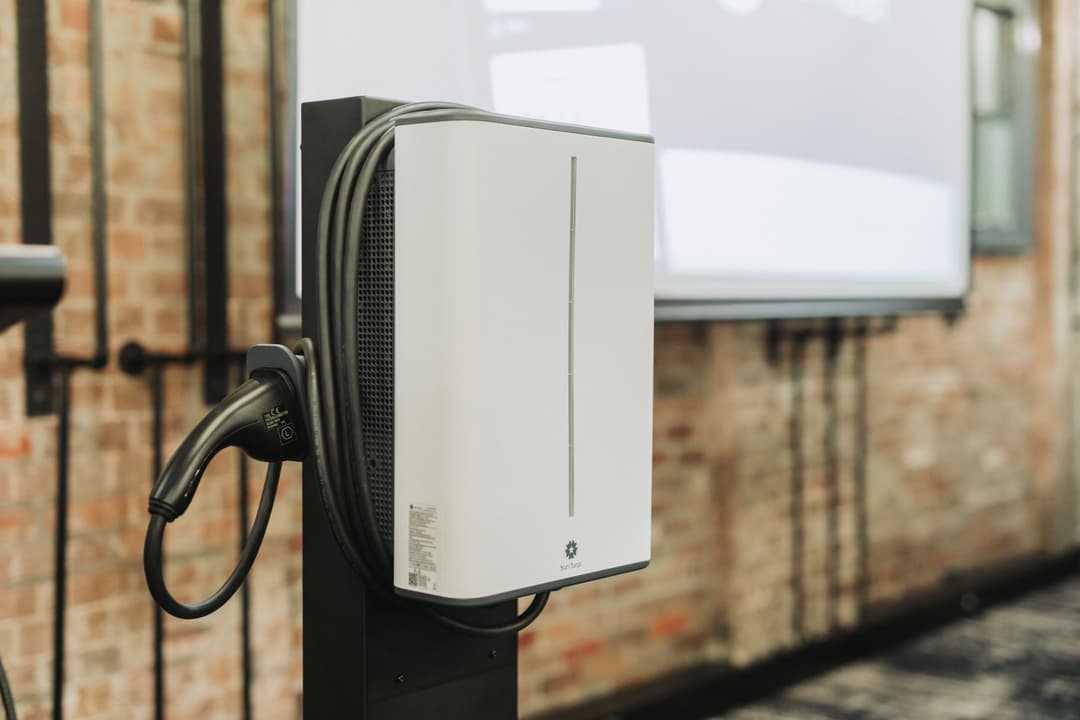
| Power | 7 kW / 11 kW |
| Protocools | ISO 15118-2 / ISO 15118-20 |
| ASNZ4777.2 certification | ✅ |
| CEC product listing | In progress |
| Grid connection status | Some networks |
| Availability | Undergoing trials |
StarCharge has recently launched the Halo V2G charger, a compact, next-generation bidirectional DC wallbox charger. The Halo V2G is engineered to support both ISO 15118-2 and ISO 15118-20 protocols, offering power capacities of 7.4kW and 11kW.
Designed for residential and light commercial applications, it combines high power efficiency (up to 96%) with full support for OCPP 2.0.1 and 2.1, ensuring smart charging and grid interaction capabilities.
The charger has achieved certification under AS 4777.2, the national standard for grid-connected inverter systems. It is currently awaiting CEC product listing status which is a requirement to be connected in some networks across Australia.
Pricing has not been finalised but a recent partnership V2G EV subscription announcement with Origin indicated the Halo is worth $6,000.
NUMBAT (V2Grid Australia)
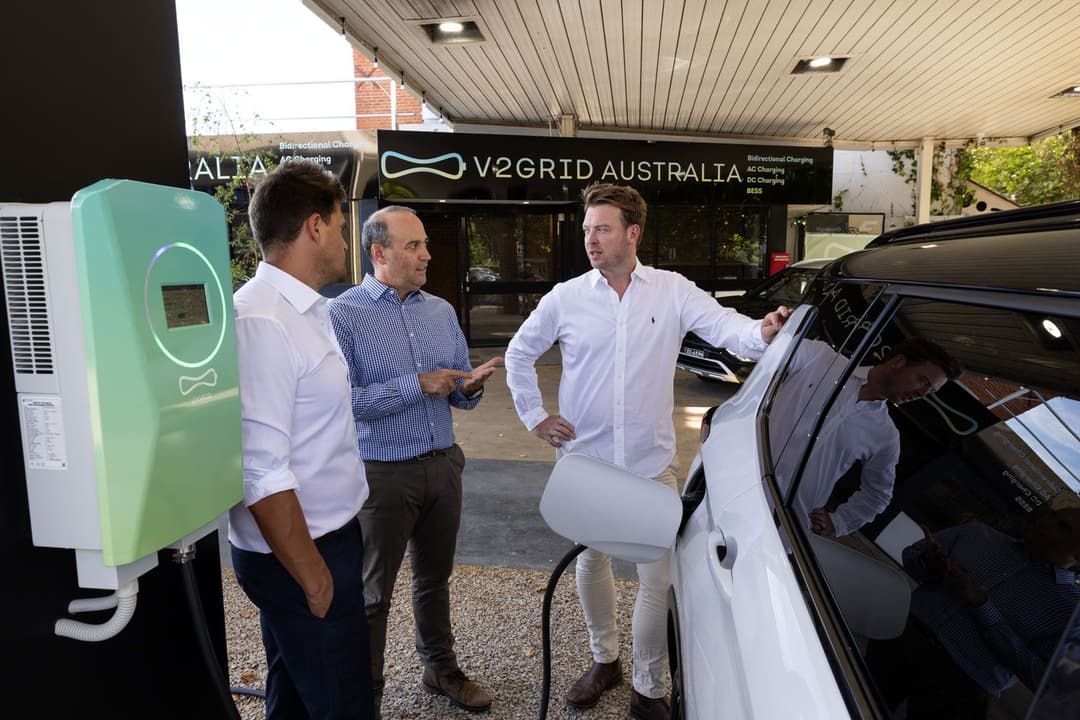
| Power | 7 kW |
| Protocools | ISO 15118-2 / ISO 15118-20 |
| Plug types | CCS2, CHAdeMO |
| ASNZ4777.2 certification | ✅ |
| CEC listing | In progress |
| Grid connection status | Some networks |
| Availability | Undergoing trials |
The Numbat V2G charger is a bidirectional charger developed by V2Grid Australia. The Numbat has received approval from Ausgrid to be connected to its network enabling EV owners in NSW to connect their cars for vehicle-to-grid (V2G) and vehicle-to-home (V2H) use.
V2Grid Australia was founded by electricians Matthew Downie and James Murray. The Numbat is notable for being the only charger currently supporting both CHAdeMO and CCS2 standards, working with popular models like the Nissan Leaf and Mitsubishi Outlander PHEV, and meeting Australian reliability standards.
Pricing has not been finalised but is expected to start from about A$10,000 plus GST.
➡️MORE: V2Grid Australia pricing for first 50 bi-directional chargers
RedEarth Energy Storage / Ambibox DC Wallbox
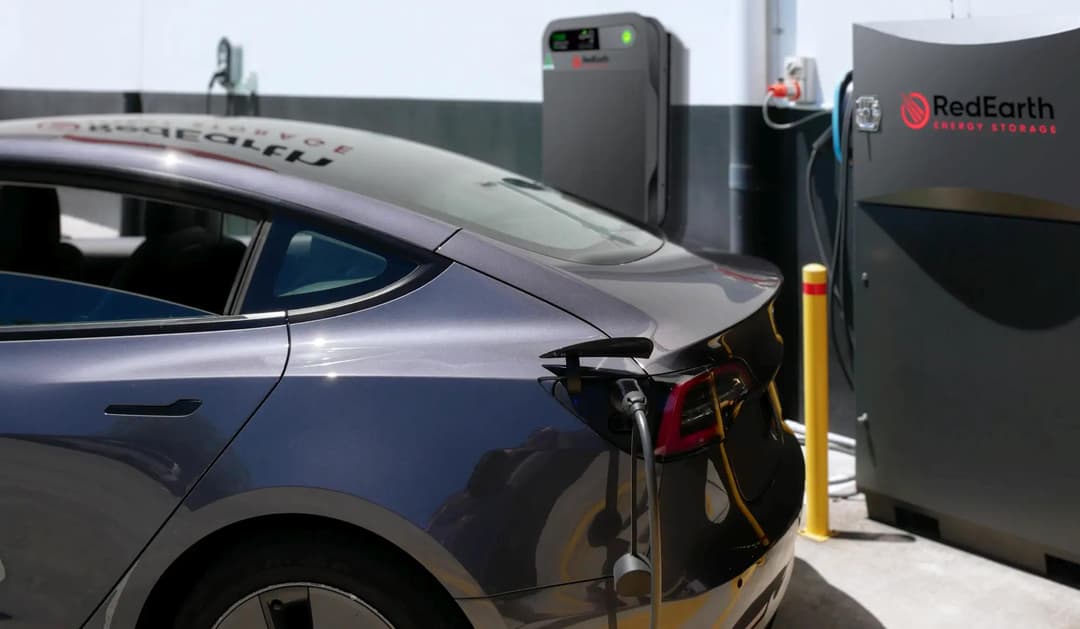
RedEarth Energy Storage and Ambibox have partnered to manufacture bi-directional V2G/V2H EV chargers in Australia. Three Phase versions are expected to be available by mid 2025. Single phase late 2025.
The Ambibox DC Wallbox is a flexible bidirectional charger supporting both V2G and V2H applications. It offers up to 22kW of charging power. It has even been used in experimental setups to enable bidirectional charging in vehicles not originally designed for it such as the Tesla Model Y. It's ideal for both residential and commercial use.
Following a recent announcement, the Red Earth V2G chargers will retails for $9,990 plus GST with pre-orders starting in November 2025 and customer deliveries from February 2026.
The Ambibox unit has been able to successfully discharge energy from several EV models during testing:
Wallbox Quasar 2
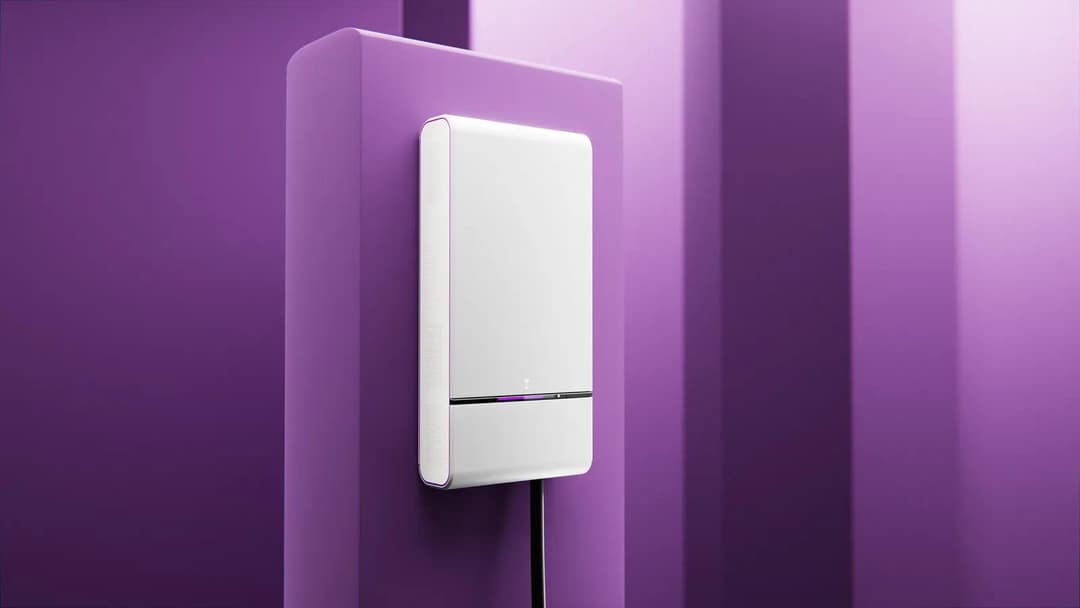
Wallbox is one of the trailblazers of V2G in Australia with dozens of Quasar 1 V2G ChaDemo chargers installed and connected to Nissan Leaves across the country.
The Wallbox Quasar 2 is a compact bidirectional DC charger offering 11.5kW of power. It’s designed for home use and includes a blackout mode, automatically switching to vehicle-to-home power during an outage. Compatible with the CCS charging standard, it integrates with home energy systems for solar and battery storage management.
The Quasar 2 was on display at Everything Electric Sydney in 2024. While Wallbox have yet to confirm release dates for Australia, expect them to eventually release the Quasar 2 in time.
Enphase Bidirectional EV Charger
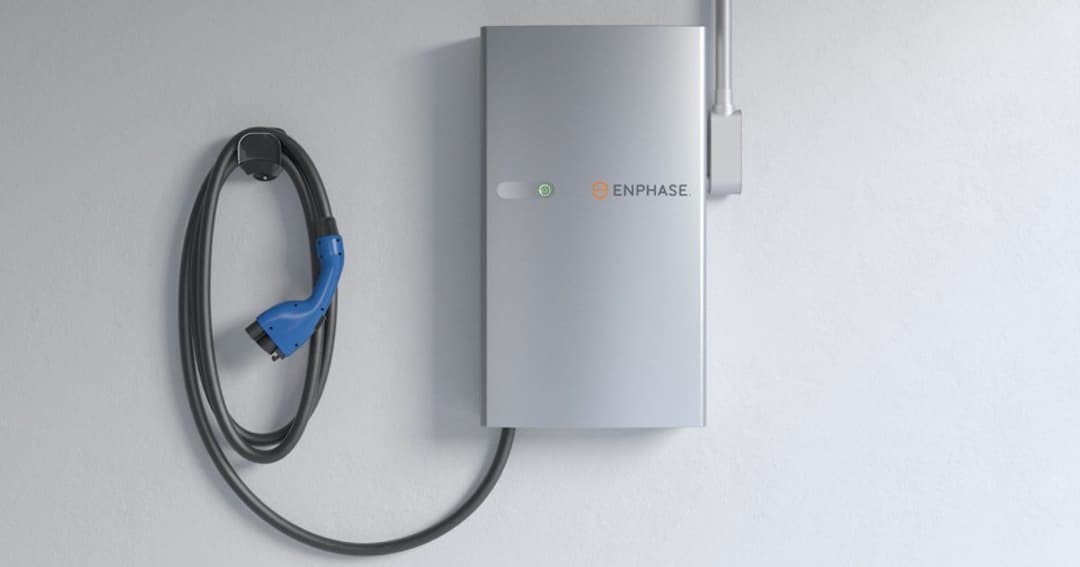
Solar technology leaders Enphase and SolarEdge are developing bidirectional chargers that integrate with their solar and battery storage systems.
The charger will offer several features:
- Vehicle-to-home (V2H): Allows an EV to function as a large home battery during blackouts.
- Vehicle-to-grid (V2G): Enables an EV battery to discharge to the mains grid, supporting grid services like a Virtual Power Plant (VPP) and supplying energy to the home.
- Green charging: Maximizes the use of on-site solar panels for EV charging.
The device also includes a "black start" feature, which uses a small internal battery to initiate communication when the EV is connected during a blackout, even if it wasn't connected initially.
However, Enphase notes that for V2H and V2G functionality, the vehicle must also support these features. The charger will integrate with Enphase's Ensemble energy management technology and the Enphase app, allowing homeowners to manage their solar, battery storage, and EV charging.
Enphase they plans to bring the charger to market once regulations have been finalised, which occured late last year. Expect them to go on sale as some stage in 2026.
What’s Next?
Bidirectional charging is on the cusp of transforming how EVs interact with the power grid. With regulatory approvals progressing and more advanced chargers hitting the market, Australian EV owners will soon have greater control over their energy use. As the technology matures, bidirectional EV charging could shift from a niche innovation to a must-have feature for electric vehicles.
About the author
Stay up to date with the latest EV news
- Get the latest news and update
- New EV model releases
- Get money savings-deal

